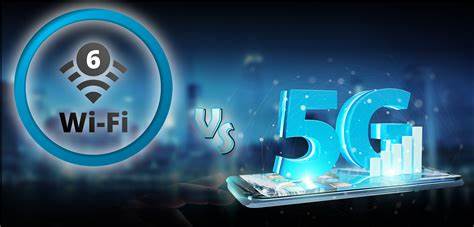Islamabad, Sep 30: As technology advances, 5G vs. Wi-Fi 6 Which is Better for Your Home and Office
Each offers substantial improvements over previous generations, but the best option depends on the specific needs of your home or office. Let’s explore the key differences between these technologies.
Speed and Performance
- 5G is the latest cellular network generation, offering download speeds of up to 10 Gbps with lower latency, ideal for high-demand activities like video streaming and gaming. However, real-world performance varies with network congestion and coverage.
- Wi-Fi 6, the latest Wi-Fi standard, provides similar speeds (up to 9.6 Gbps) but is optimized for managing multiple devices on a local network. It also boosts signal strength and range, making it perfect for homes and offices.
Coverage and Availability
- 5G networks rely on nearby cellular towers, which may limit availability in rural areas but are widely available in urban centers. It excels in outdoor and mobile use cases.
- Wi-Fi 6 is confined to your router’s range but can be extended through mesh networks or additional routers. It offers better control for home and office environments.
Cost and Convenience
- 5G requires a cellular provider subscription, often with data limits, making it potentially more expensive, especially with high usage.
- Wi-Fi 6 is typically more cost-effective for home and office use, leveraging existing broadband subscriptions and eliminating reliance on cellular infrastructure.
For most homes and offices, Wi-Fi 6 offers reliable, cost-efficient connectivity for multiple devices, providing greater control and flexibility.
Meanwhile, 5G is ideal for situations where mobility and high-speed internet are needed, particularly in outdoor or remote environments. Each technology has its strengths, and the right choice depends on your specific needs.
